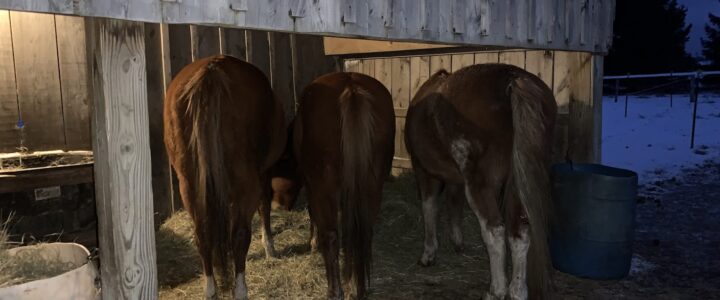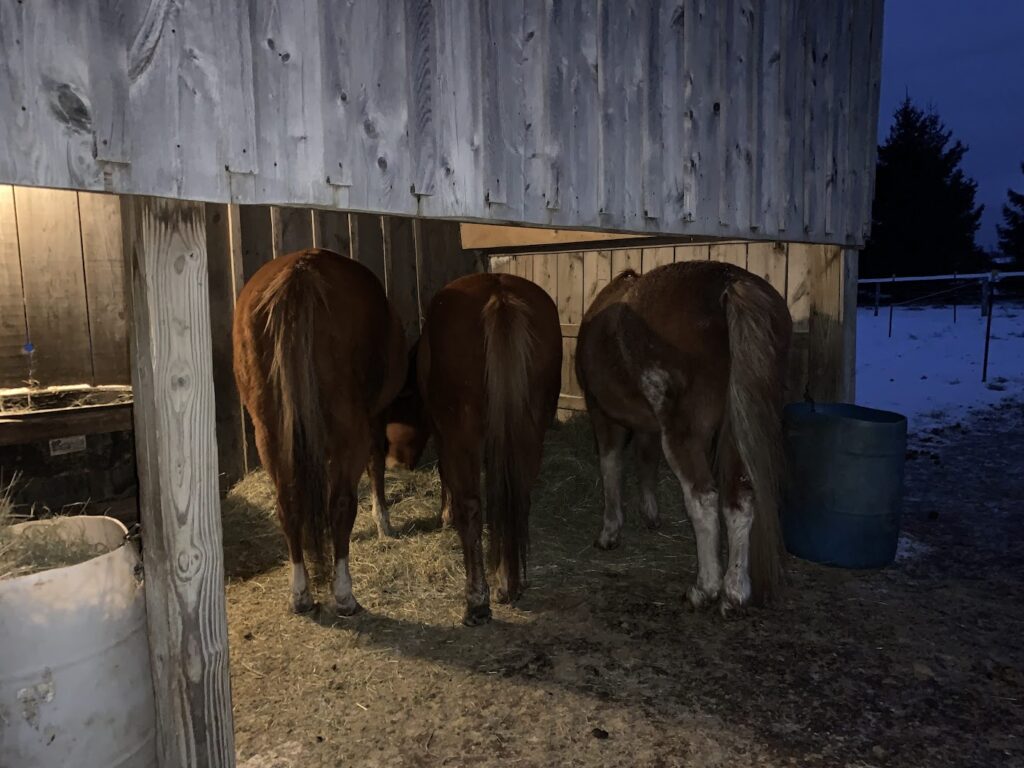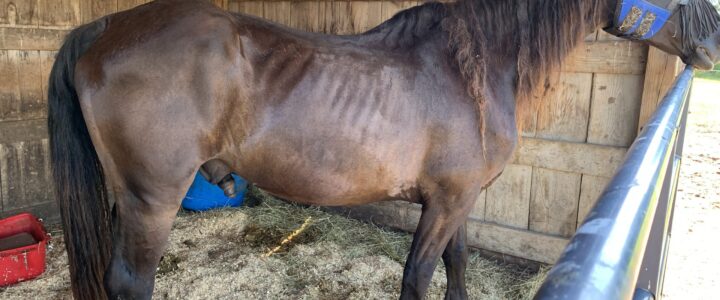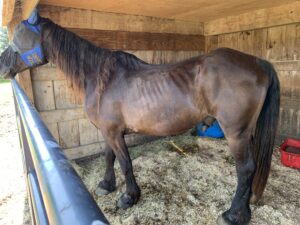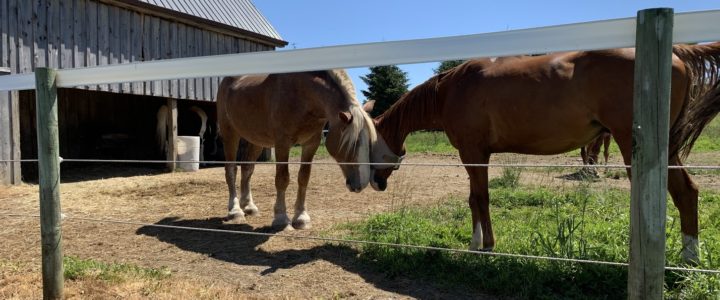Introducing a new horse to a herd is more art than it is science. There are so many factors that go can affect an introduction, including the personalities of the horses, the time of day, the weather, and just plain luck.
Preparing for the Introduction
We had waited on introducing Harry to the remainder of the herd out of an abundance of caution. In the past, he had been aggressive to other herd mates and we wanted to see how everyone would get along across a shared fence line before we put everyone together.
The biggest question that we had was how would Charlie and Harry interact. Charlie is the alpha of the herd and runs a pretty tight ship. He likes a calm herd and does not tolerate any signs of a herd member challenging his authority well.
Even from across the line, it did not take Harry long to figure out that Charlie runs the show and that he needed to keep his distance. The one herd member that Harry did enjoy spending time with was Louie. The two, one on each side of the shared line, would spend hours just standing next to each other. Every once in a while they would touch noses, but most of the time they just enjoyed each other’s company.
The Lead-Up
When it finally came time to allow Harry in with the rest of the herd, we had to do some rearranging. The thought was that it would be better for the introductions to take place on our largest pasture. Also. we thought that having Charlie and the rest of the herd on the pasture first, would make sense.
In order for that to happen, we needed to move Charlie, Roanie, Chase, and Louie from the front of the first pasture, past Harry in the back half of the front pasture, to the second pasture. Walking everyone by Harry would be a good test to gauge everyone’s mood.
The parade started with Charlie, who could have cared less about Harry. Harry, on the other hand, was all worked up and trotting up and down the fence line. Next came Louie, who wanted to get as close to Harry as he could. Both Chase and Roanie just wanted to get to the back pasture with Charlie and Louie and really didn’t even notice Harry at all.
Finally Together
After waiting a few hours for Harry to calm down and stop running around and for the herd to establish that the pasture was their domain, we took the shared line down so there was more room in the first pasture and opened the gate.
Charlie was the first to wander into the first pasture where Harry still was. In true Charlie fashion, he paid absolutely no attention to Harry and went right for the barn. Louie, on the other hand, was all about finally meeting Harry face-to-face. They walked right up to each other, touched noses, and started smelling each other all over.
From that moment on, Harry and Louie have been together. During the late afternoon, as soon as Louie starts to make his way out to any of the pastures, Harry is right behind him. Later at night, you can find Louie laying in the barn and Harry standing over him. Both peacefully sleeping.
Don’t miss out on the latest news from the ranch! Sign up for our monthly newsletter today.
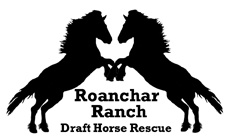
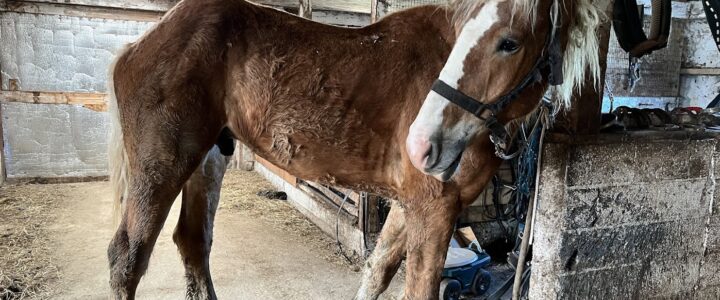
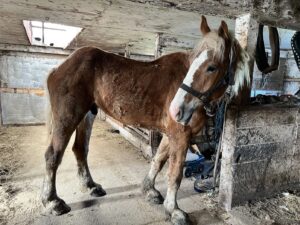
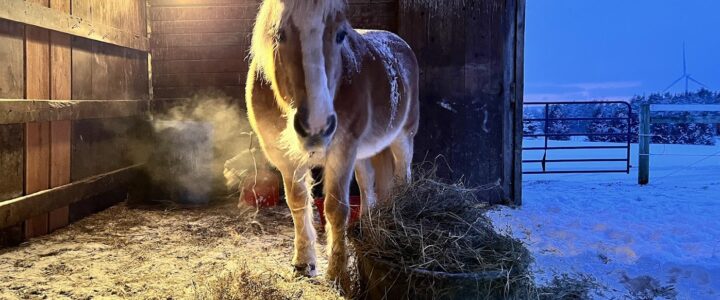
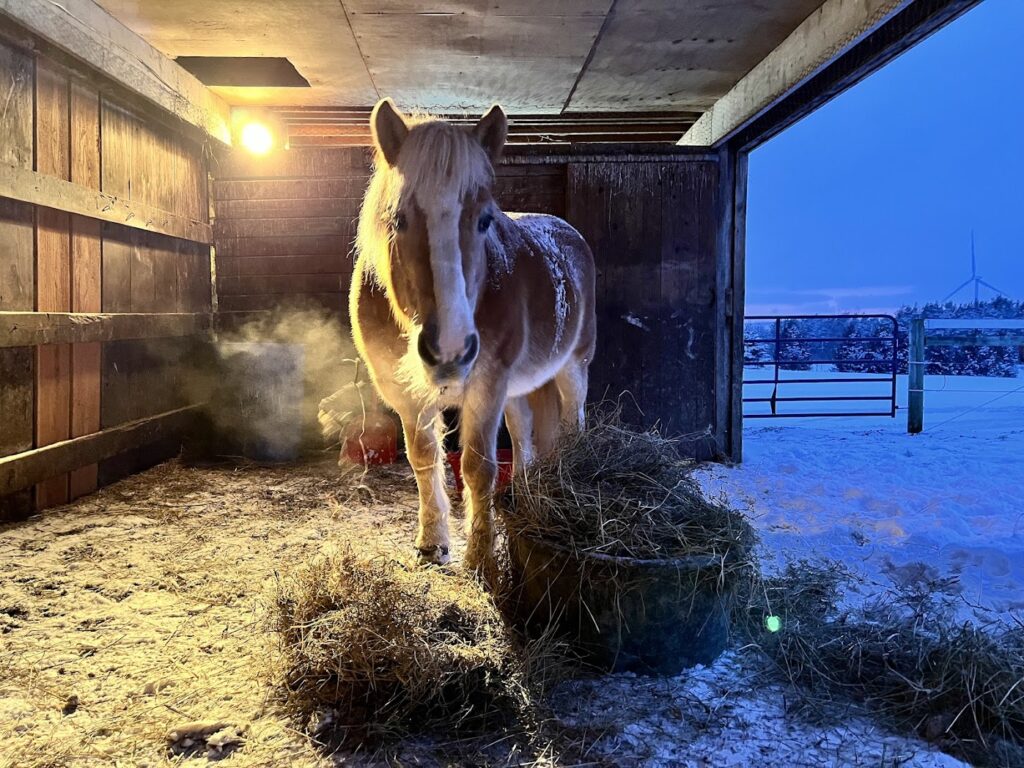
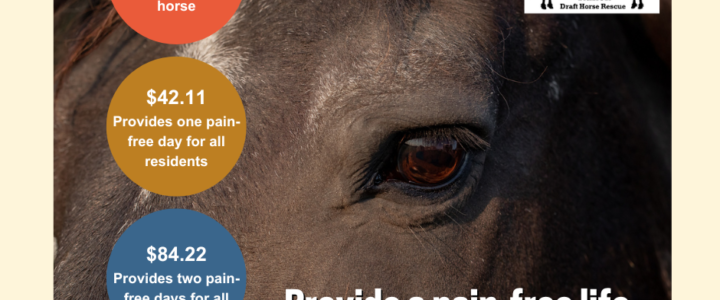
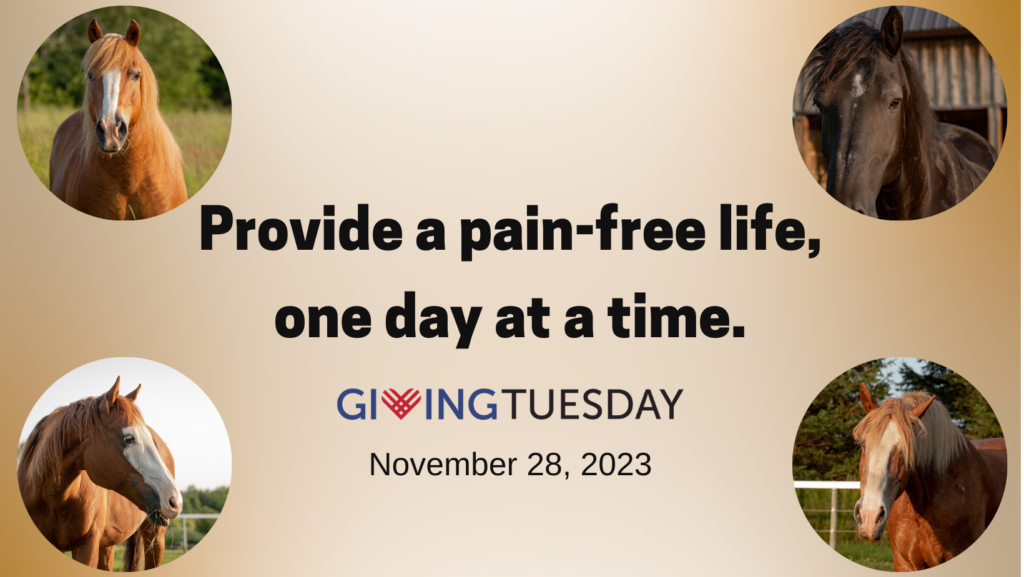

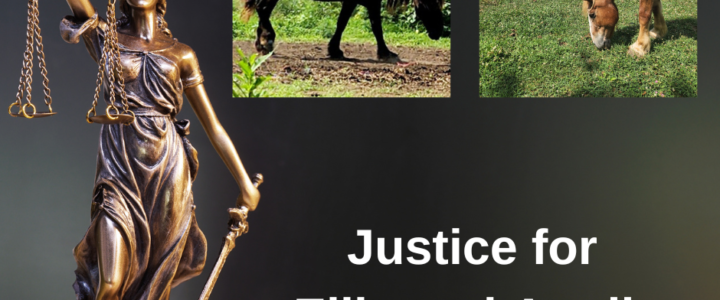
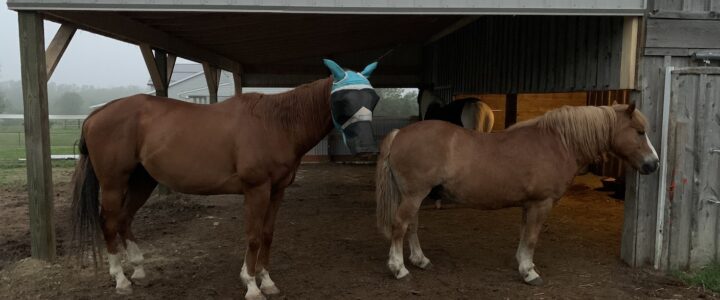
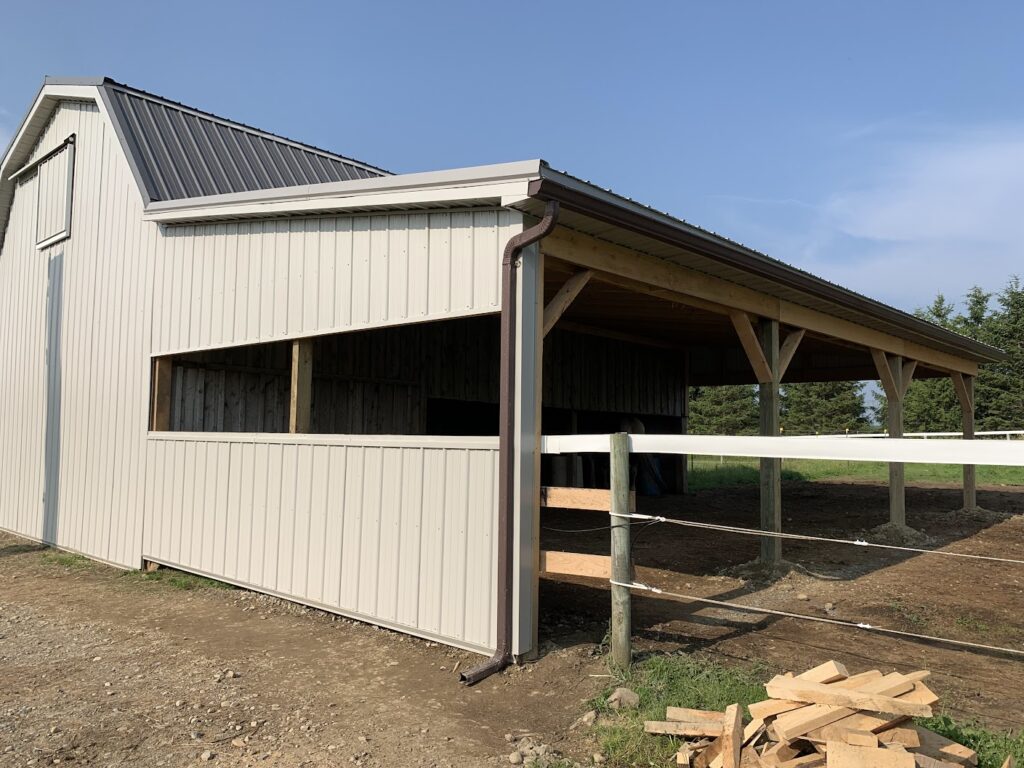
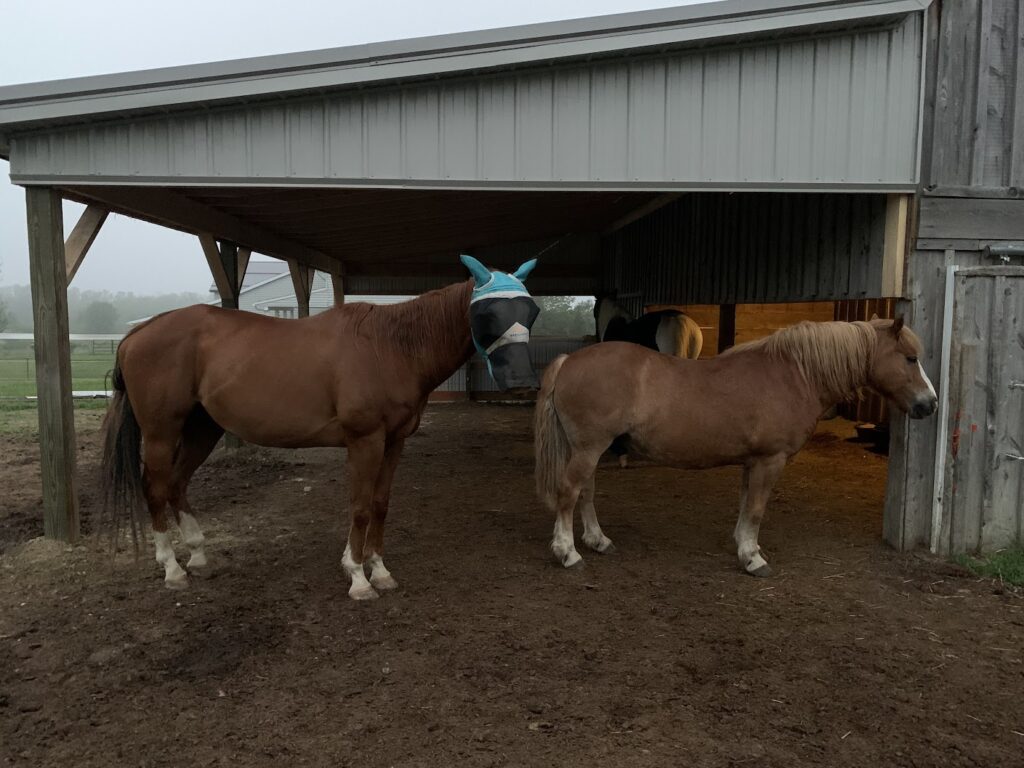
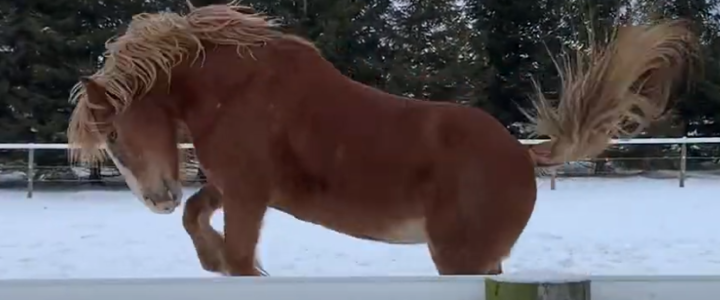
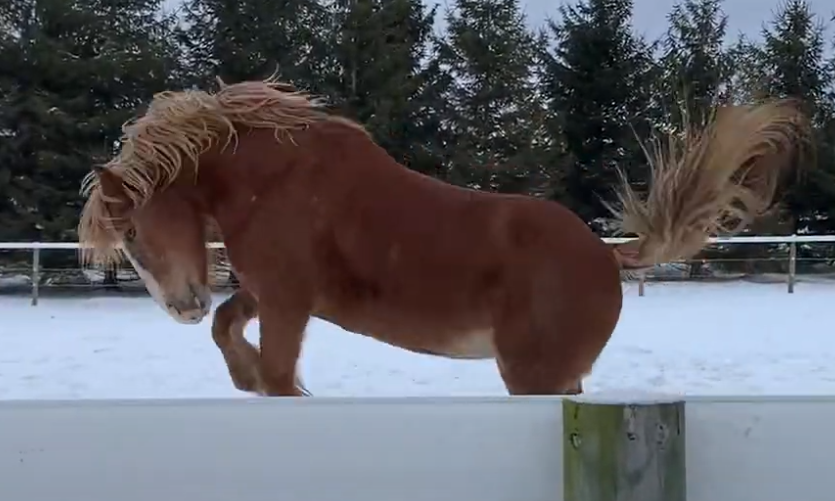
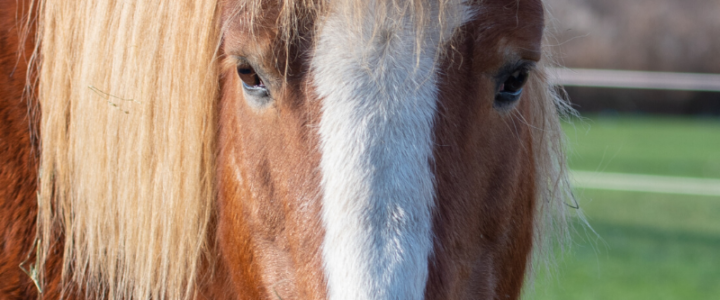
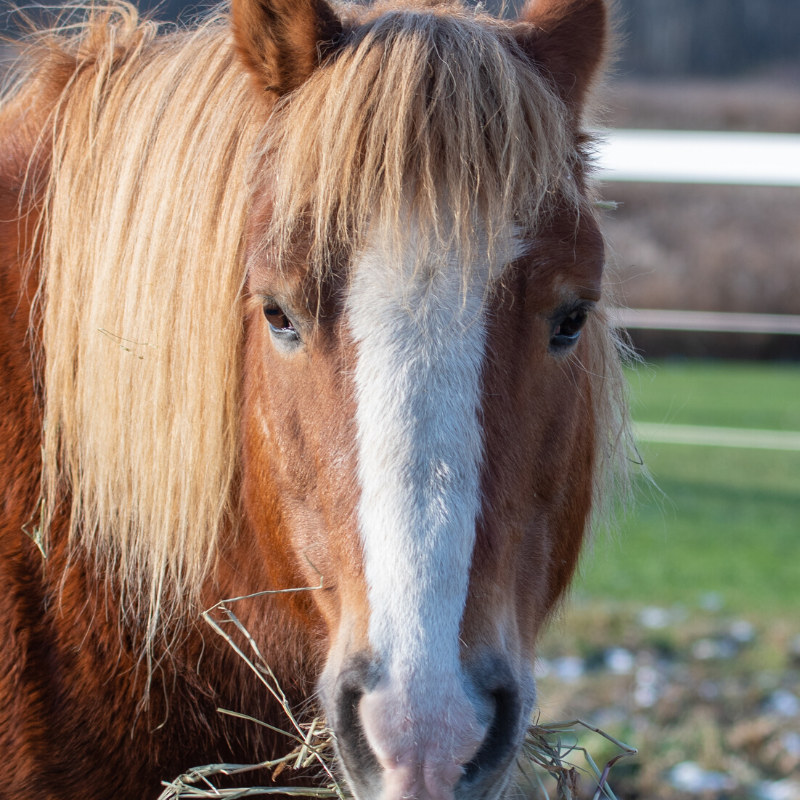 Abraham
Abraham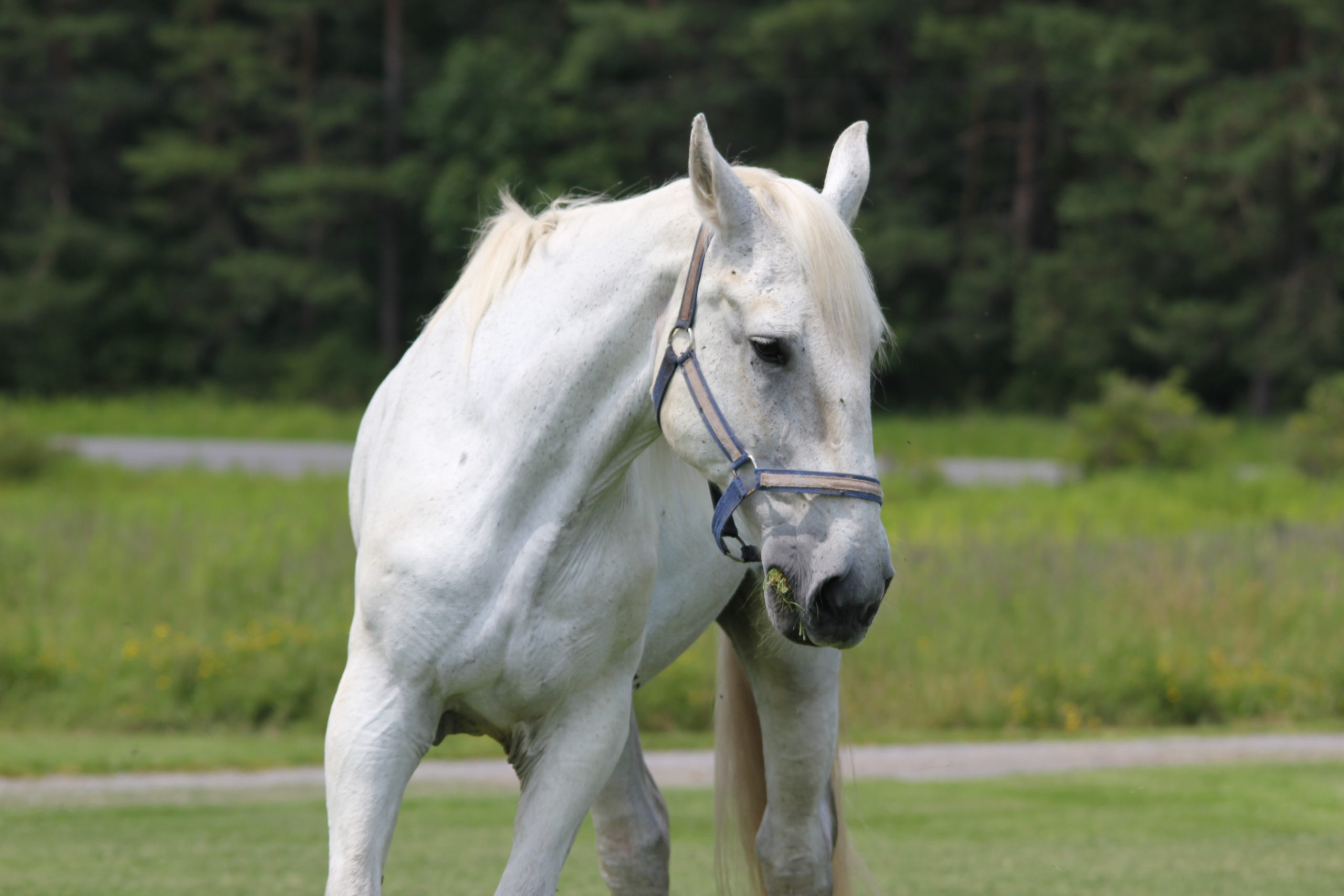 Elijah
Elijah Magdalene
Magdalene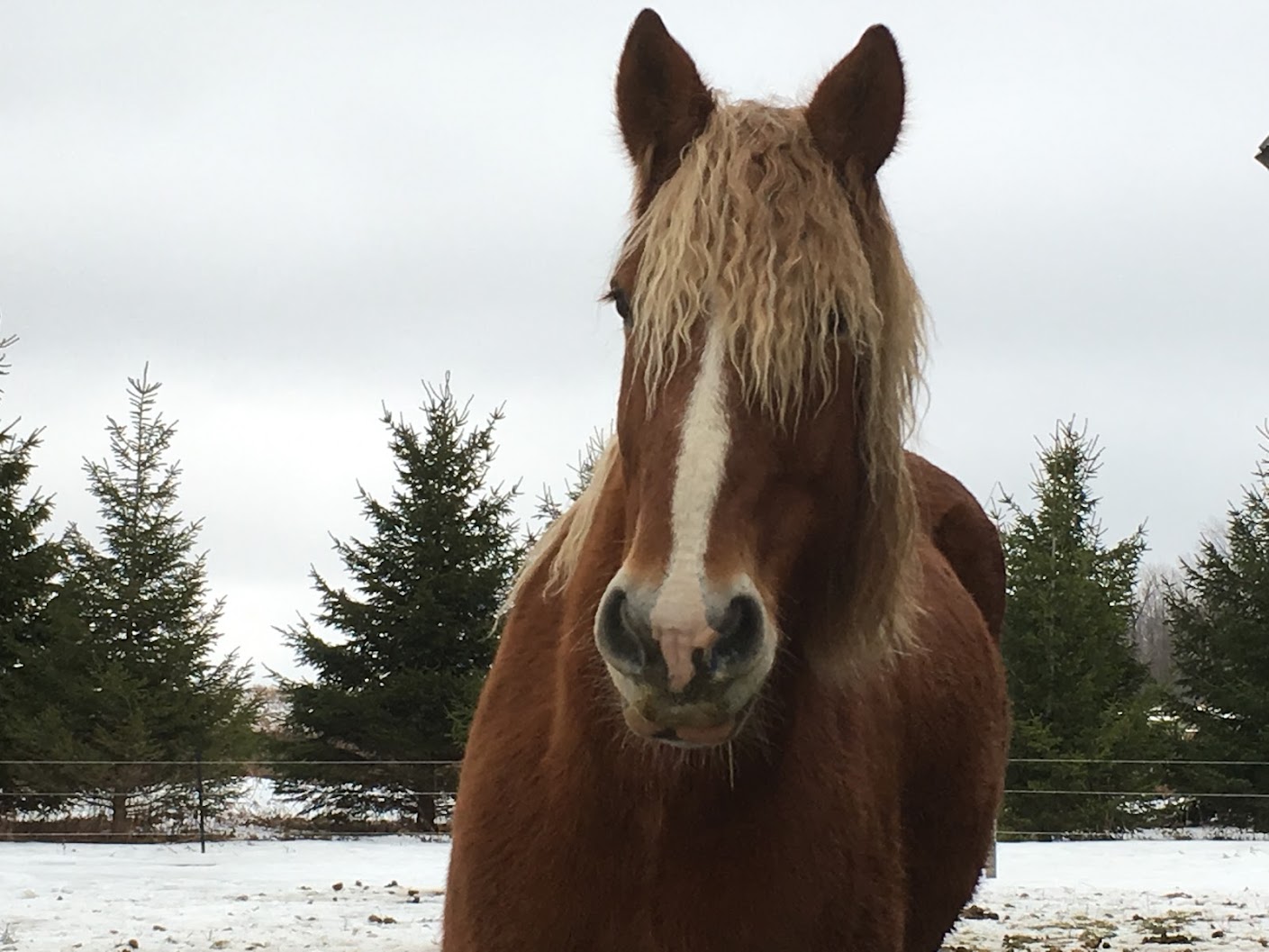 Tobias
Tobias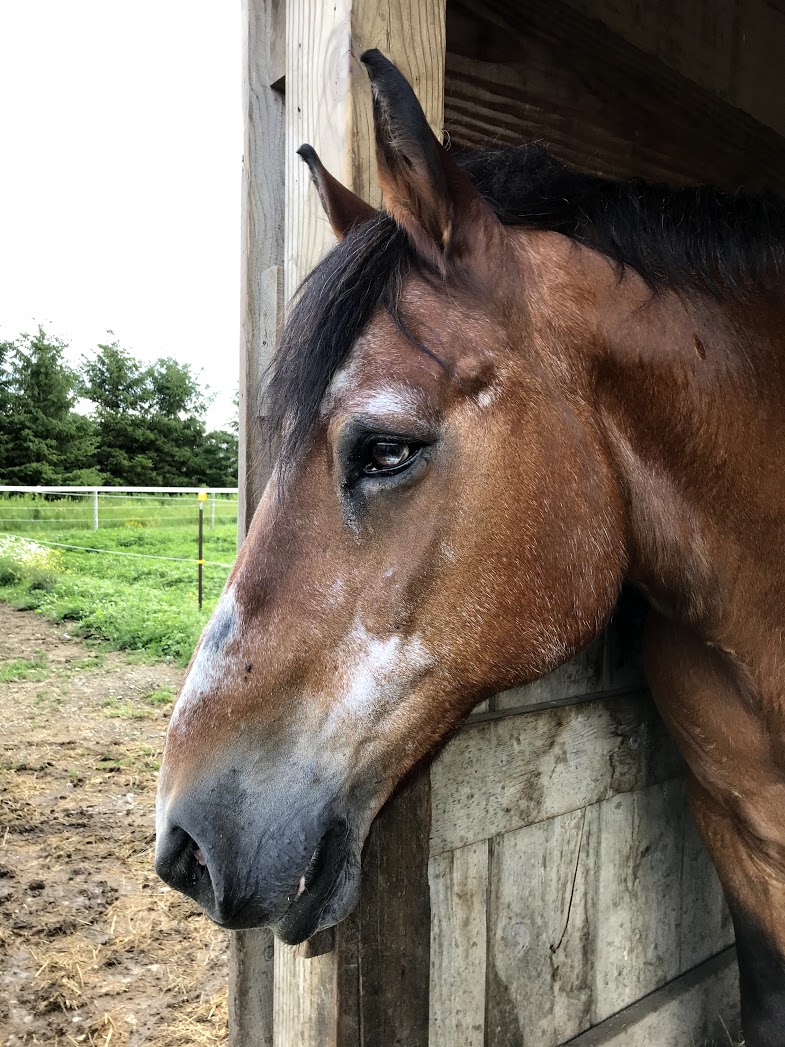 Gabriella
Gabriella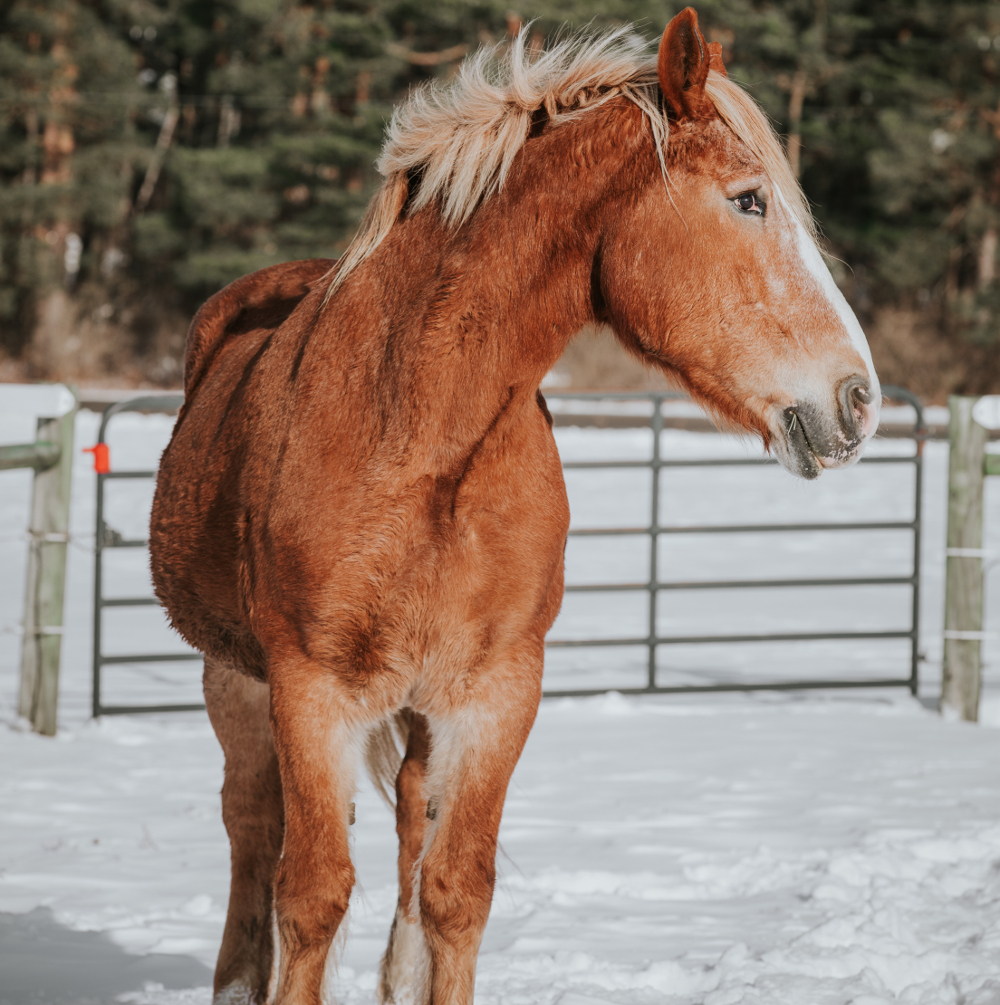 Ellie
Ellie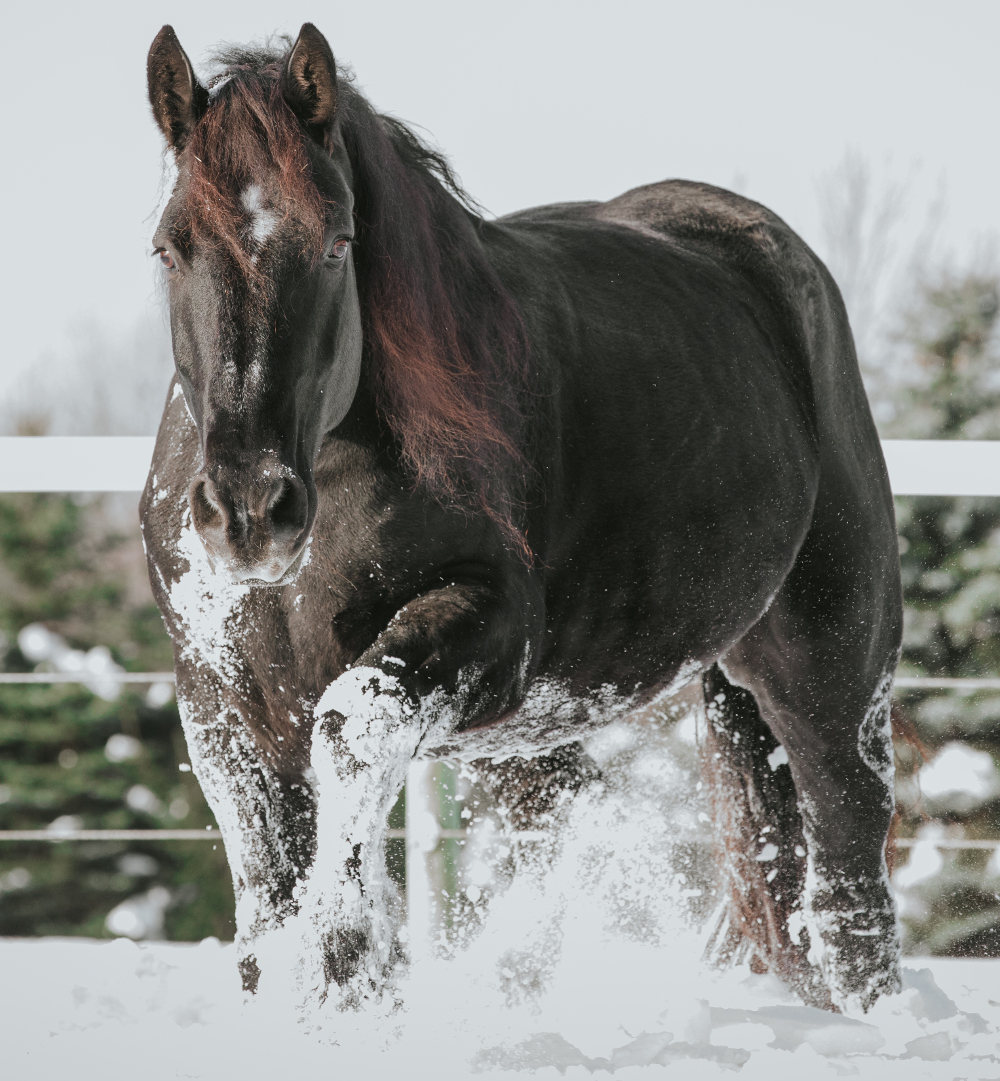 Apollo
Apollo